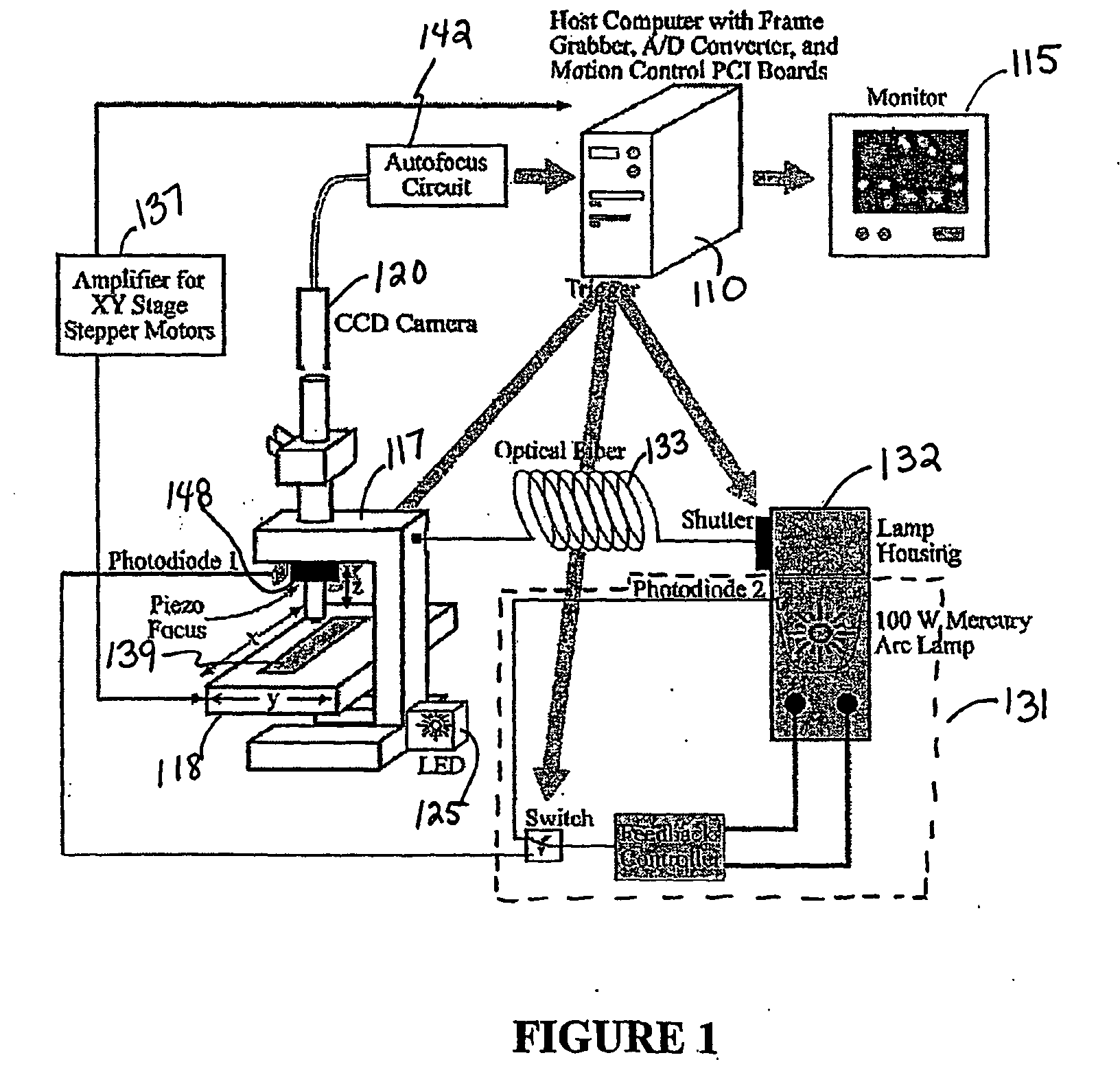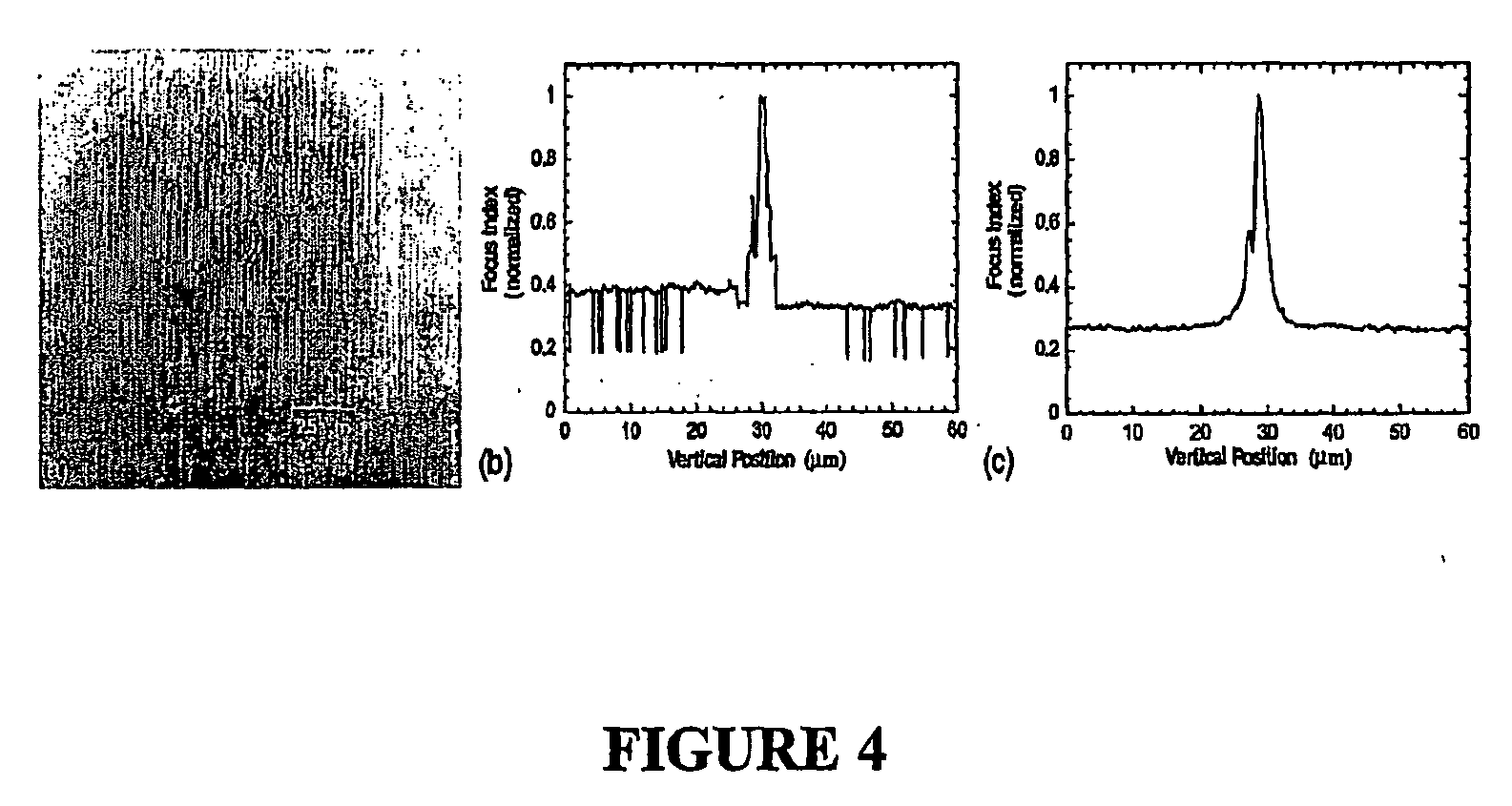System and method for automatic color segmentation and minimum significant response for measurement of fractional localized intensity of cellular compartments
a fractional localized intensity and color segmentation technology, applied in the field of biological material assays, can solve the problems of compromising the efficacy of candidate drugs, unable to meet the requirements of cost-effective and controversial animal testing, and complex real cell responses, etc., to achieve minimum significant response, high throughput screening, and economic advantages
- Summary
- Abstract
- Description
- Claims
- Application Information
AI Technical Summary
Benefits of technology
Problems solved by technology
Method used
Image
Examples
Embodiment Construction
Fractional Localized Intensity of Cellular Compartments (FLIC)
[0044] Development of multicompartment models for cellular translocation events: Many potentially important molecular targets are regulated not only in their expression levels, but also by their subcellular or spatial localization. In the post-genomics era, illuminating the function of genes is rapidly generating new data and overthrowing old dogma The prevailing picture of the cell is no longer a suspension of proteins, lipids and ions floating around inside a membrane bag, but to involves protein complexes attached to architectural scaffolds or chromatin provided by the cytoskeleton, endoplasmic reticulum, Golgi apparatus, ion channels and membrane pores. Cell surface receptors are oriented within the plasma membrane such that they can bind an extracellular molecule and initiate a response in the cytoplasm. Protein complexes in the cytoplasm can be dissociated following regulated proteolysis to release specific DNA bi...
PUM
| Property | Measurement | Unit |
|---|---|---|
| area | aaaaa | aaaaa |
| microscopy | aaaaa | aaaaa |
| power | aaaaa | aaaaa |
Abstract
Description
Claims
Application Information
 Login to View More
Login to View More - R&D
- Intellectual Property
- Life Sciences
- Materials
- Tech Scout
- Unparalleled Data Quality
- Higher Quality Content
- 60% Fewer Hallucinations
Browse by: Latest US Patents, China's latest patents, Technical Efficacy Thesaurus, Application Domain, Technology Topic, Popular Technical Reports.
© 2025 PatSnap. All rights reserved.Legal|Privacy policy|Modern Slavery Act Transparency Statement|Sitemap|About US| Contact US: help@patsnap.com



